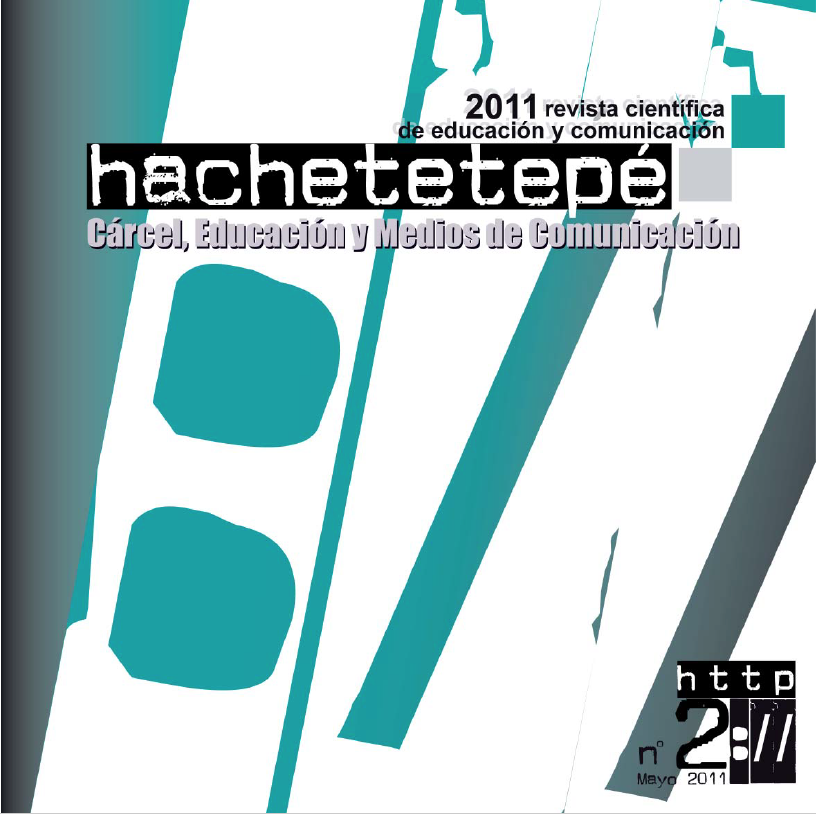Education and penitenciary treatment, a relation in orden to improve the prison`s social image

Info
Abstract
This article contents a few contributions made on the investigation included on the author’s thesis named: “Prison, power, conflict and citizenship, the reeducation function’s micropolicy”.
Starting from the relations between education and penitentiary treatment made from the legal and theoretical points of view about this complex relationship, which, among other purposes, is used to create the “social calm” to carry out the constitutional mandate that oriented the penalties of imprisonment to the functions of rehabilitation and social reintegration.
Thanks some media the “social calm” means compensation in front of another the image about prisons, where normally the breaking news is the gossip and violence on internal conflicts. All the ways, both positions mean independent areas about the day by day on prison, and contribute at the continuation of the general prevention and to consolidate a model of treatment that doesn’t give to us answers to the constitutional purposes.
Keywords
Downloads
How to Cite
License

This work is licensed under a Creative Commons Attribution-NonCommercial-NoDerivatives 4.0 International License.
Those authors who have published with this journal, accept the following terms:
- They will retain their copyright and guarantee the journal the right to first publication of their work, which will simultaneously be subject to the Creative Commons Attribution License . They may be copied, used, disseminated, transmitted and publicly displayed, provided that the authorship, url, and magazine are cited, and are not used for commercial purposes. No derivative works are allowed.
- They may adopt other non-exclusive license agreements for the distribution of the published version of the work (e.g., deposit it in an institutional telematic archive or publish it in a monographic volume) provided that the initial publication in this journal is indicated.
- Disseminate your work through the Internet (e.g., in institutional telematic archives or on your website) once the manuscript is accepted, which may lead to interesting exchanges and increased citations of the published work. (See The effect of open access).
Hachetetepé. Scientific journal of education and communication does not charge a fee for the submission of manuscripts or for the publication of its articles.
References
Arnanz, E. (1988). Cultura y prisión. Una experiencia y un proyecto de acción sociocultural penitenciaria. Madrid: Popular.
Baratta, A. (2002). Criminología crítica y crítica del derecho penal. Madrid: Siglo XXI.
Bourdieu, P. (2003a). Capital cultural, escuela y espacio social. México: Siglo XXI.
Bourdieu, P. (2003b). Cuestiones de sociología. Madrid: Istmo.
Bourdieu, P. (2006). Autoanálisis de un sociólogo. Barcelona: Anagrama.
Clemente Díaz, M. (Coord.). (1997). Fundamentos de la psicología jurídica. Madrid: Pirámides.
Foucault, M. (2000). Vigilar y castigar. Nacimiento de la prisión. Madrid: Siglo XXI.
Freire, P. (1990). La naturaleza política de la educación. Cultura, poder y liberación. Barcelona: Piados.
García, E. (2001). Inmigración y delincuencia en España: análisis criminológico. Valencia: Tirant lo blanch.
Garrido, V. y Redondo, S. (dir.). (1992). La intervención educativa en el medio penitenciario. Una década de reflexión. Madrid: Diagrama.
Ley Orgánica 1/1979, de 26 de septiembre, general penitenciaria. BOE nº: 239, 5 de octubre de 1979.
Mapelli, B. (1983). Principios fundamentales del sistema penitenciario español. Barcelona: Bosch, casa editorial.
Martínez, R y Lee, M (2004). Inmigración y delincuencia; en Revista de Española de Investigación Criminológica REIC NI-01-04 http://www.criminologia.net/revista ISSN 1696-9219 (Consultada el 20 de marzo de 2011).
Reglamento Penitenciario (1981). Real Decreto 1201/1981, de 8 de mayo. BOE núms. 149 a 151, del 23 al 25 de junio de 1981.
Reglamento Penitenciario (1996). Real Decreto 190/1996, de 9 de febrero. BOE nº: 0040, de 15 de febrero de 1996.
Valderrama, P. (2010). Tesis doctoral “Cárcel: poder conflicto y ciudadanía. La micropolítica de la función reeducadora”. Universidad de Málaga. Manuscrito no publicado.
Wagman, D. (2002). Estadística, delito e inmigración; en Página Abierta, nº 129, Madrid.

